Predictive Control of Power Electronics Converters in Renewable Energy Systems
Abstract
:1. Introduction
2. Predictive Control Theory
2.1. Model Predictive Control (MPC)
2.2. Vector-Sequence-Based Predictive Control (VPC)
3. Application of Predictive Control in Renewable Energy Systems
3.1. MPC for PV Systems
3.2. VPC for Wind Power Generation
4. Experimental Verification
4.1. Experimental Results of MPC for PV System
4.2. Experimental Results of VPC for Wind System
5. Conclusions
Acknowledgments
Author Contributions
Conflicts of Interest
Appendix A
| Symbol | Quantity | Value |
|---|---|---|
| Vrated,S | Rated stator voltage | 415 V (delta) |
| Vrated,r | Rated rotor voltage | 380 V (star) |
| Irated,S | Rated stator current | 38 A |
| Irated,r | Rated rotor current | 53 A |
| Vdc | DC-link voltage | 400 V |
| ωg | Grid angular frequency | 314.16 rad/s |
| Lm | Magnetizing inductance | 85.003 mH |
| Lσs | Stator leakage inductance | 2.426 mH |
| Lσr | Rotor leakage inductance (referred to stator) | 2.426 mH |
| Rs | Stator winding resistance | 0.207 Ω |
| Rr | Rotor winding resistance (referred to stator) | 0.218 Ω |
| p | Poles pairs | 2 |
| Symbol | Quantity | Value |
|---|---|---|
| Vdc | PV output | 300 V |
| Vg | Grid line-to-line voltage | 133 V rms |
| ωg | Grid angular frequency | 314.16 rad/s |
| L | Line Inductance | 4.5 mH |
| R | Line Resistance | 0.56 Ω |
References
- Blaabjerg, F.; Liserre, M.; Ma, K. Power electronics converters for wind turbine systems. IEEE Trans. Ind. Appl. 2012, 48, 708–719. [Google Scholar] [CrossRef]
- Guerrero, J.M.; Blaabjerg, F.; Zhelev, T.; Hemmes, K.; Monmasson, E.; Jemei, S.; Comech, M.P.; Granadino, R.; Frau, J.I. Distributed generation: Toward a new energy paradigm. IEEE Mag. Ind. Electron. 2010, 4, 52–64. [Google Scholar] [CrossRef]
- Holmes, G.; Lipo, T. Pulse Width Modulation for Power Converters: Principles and Practice; IEEE: Washington, DC, USA, 2003. [Google Scholar]
- Kazmierkowski, M.P.; Krishnan, R.; Blaabjerg, F. Control in Power Electronics Selected Problems; Academic Press: New York, NY, USA, 2002. [Google Scholar]
- Utkin, V.I. Sliding mode control design principles and applications to electric drives. IEEE Trans. Ind. Electron. 1993, 40, 23–36. [Google Scholar] [CrossRef]
- Raviraj, V.S.C.; Sen, P.C. Comparative study of proportional-integral, sliding mode, and fuzzy logic controllers for power converters. IEEE Trans. Ind. Appl. 1997, 33, 518–524. [Google Scholar] [CrossRef]
- Bouafia, A.; Krim, F.; Gaubert, J.P. Fuzzy-logic-based switching state selection for direct power control of three-phase PWM rectifier. IEEE Trans. Ind. Electron. 2009, 56, 1984–1992. [Google Scholar] [CrossRef]
- Ozpineci, B.; Tolbert, L.M.; Chiasson, J.N. Harmonic optimization of multilevel converters using genetic algorithms. IEEE Trans. Power Electron. Lett. 2005, 3, 92–95. [Google Scholar] [CrossRef]
- Leyva, R.; Martinez-Salamero, L.; Jammes, B.; Marpinard, J.C.; Guinjoan, F. Identification and control of power converters by means of neural networks. IEEE Trans. Circuits Syst. 1997, 44, 735–742. [Google Scholar] [CrossRef]
- Veerachary, M.; Senjyu, T.; Uezato, K. Neural-network-based maximum-power-point tracking of coupled-inductor interleaved-boost-converter-supplied PV system using fuzzy controller. IEEE Trans. Ind. Electron. 2003, 50, 749–758. [Google Scholar] [CrossRef]
- Rodriguez, J.; Cortes, P. Predictive Control of Power Converters and Electrical Drives; Wiley-IEEE: Hoboken, NJ, USA, 2012. [Google Scholar]
- Garcia, C.F.; Rivera, M.E.; Rodríguez, J.R.; Wheeler, P.W.; Peña, R.S. Predictive current control with instantaneous reactive power minimization for four-leg indirect matrix converter. IEEE Trans. Ind. Electron. 2017, 64, 922–929. [Google Scholar] [CrossRef]
- Kouro, S.; Cortes, P.; Vargas, R.; Ammann, U.; Rodriguez, J. Model predictive control—A simple and powerful method to control power converters. IEEE Trans. Ind. Electron. 2009, 56, 1826–1838. [Google Scholar] [CrossRef]
- Vazquez, S.; Leon, J.I.; Franquelo, L.G.; Rodriguez, J.; Young, H.A.; Marquez, A.; Zanchetta, P. Model predictive control: A review of its applications in power electronics. IEEE Ind. Electron. Mag. 2014, 8, 16–31. [Google Scholar] [CrossRef]
- Cortes, P.; Kazmierkowski, M.P.; Kennel, R.M.; Quevedo, D.E.; Rodriguez, J. Predictive control in power electronics and drives. IEEE Trans. Ind. Electron. 2008, 55, 4312–4324. [Google Scholar] [CrossRef]
- Rodriguez, J.; Kazmierkowski, M.P.; Espinoza, J.R.; Zanchetta, P.; Abu-Rub, H.; Young, H.A.; Rojas, C.A. State of the art of finite control set model predictive control in power electronics. IEEE Trans. Ind. Inf. 2013, 9, 1003–1016. [Google Scholar] [CrossRef]
- Salazar, J.; Valverde, L.; Tadeo, F. Predictive control of a renewable energy microgrid with operational cost optimization. In Proceedings of the 39th Annual Conference of the IEEE Industrial Electronics Society, Vienna, Austria, 10–13 November 2013; pp. 7950–7955. [Google Scholar]
- Zhang, X.; Bao, J.; Wang, R.; Zheng, C.; Skyllas-kazacos, M. Dissipativity based distributed economic model predictive control for residential microgrids with renewable energy generation and battery energy storage. Renew. Energy 2017, 100, 18–34. [Google Scholar] [CrossRef]
- Valverde, S.; Bordons, C.; Rosa, F. Power management using model predictive control in a hydrogen-based microgrid. In Proceedings of the 38th Annual Conference of IEEE Industrial Electronics (IECON 2012), Montreal, QC, Canada, 25–28 October 2012; pp. 5653–5660. [Google Scholar]
- Perez, L.; Beltran, H.; Aparicio, N.; Rodriguez, P. Predictive power control for PV plants with energy storage. IEEE Trans. Sustain. Energy 2013, 4, 482–490. [Google Scholar] [CrossRef]
- Hu, J.; Zhu, J.; Zhang, Y.; Platt, G.; Ma, Q.; Dorrell, D.G. Predictive direct virtual torque and power control of doubly fed induction generators for fast and smooth grid synchronization and flexible power regulation. IEEE Trans. Power Electron. 2008, 28, 3182–3194. [Google Scholar] [CrossRef]
- Song, Z.; Tian, Y.; Chen, Z.; Hu, Y. Enhanced predictive current control of three-phase grid-tied reversible converters with improved switching patterns. Energies 2016, 9, 41. [Google Scholar] [CrossRef]
- Abad, G.; Rodriguez, M.A.; Poza, J. Two-level VSC based predictive direct torque control of the doubly fed induction machine with reduced torque and flux ripples at low constant switching frequency. IEEE Trans. Power Electron. 2008, 23, 1050–1061. [Google Scholar] [CrossRef]
- Saygin, D.; Kempener, R.; Wagner, N.; Ayuso, M.; Gielen, D. The implications for renewable energy innovation of doubling the share of renewables in the global energy mix between 2010 and 2030. Energies 2015, 8, 5828–5865. [Google Scholar] [CrossRef]
- Blaabjerg, F.; Ma, K. Future on power electronics for wind turbine systems. IEEE J. Emerg. Sel. Top. Power Electron. 2013, 1, 139–152. [Google Scholar] [CrossRef]
- Kramer, W.; Chakraborty, S.; Kroposki, B.; Thomas, H. Advanced Power Electronic Interfaces for Distributed Energy Systems—Part1: Systems and Topologies; National Renewable Energy Laboratory: Golden, CO, USA, 2008.
- Wang, F.; Duarte, J.L.; Hendrix, M.A.M. Grid-interfacing converter systems with enhanced voltage quality for microgrid application—Concept and implementation. IEEE Trans. Power Electron. 2011, 26, 3501–3513. [Google Scholar] [CrossRef]
- Tanvir, A.A.; Merabet, A.; Beguenane, R. Real-time control of active and reactive power for doubly fed induction generator (DFIG)-based wind energy conversion system. Energies 2015, 8, 10389–10408. [Google Scholar] [CrossRef]
- Noguchi, T.; Tomiki, H.; Kondo, S.; Takahashi, I. Direct power control of PWM converter without power-source voltage sensors. IEEE Trans. Ind. Appl. 1998, 34, 473–479. [Google Scholar] [CrossRef]
- Carrasco, J.M.; Franquelo, L.G.; Bialasiewicz, J.T.; Galvan, E.; Guisado, R.C.P.; Prats, M.A.M.; León, J.I.; Moreno-Alfonso, N. Power-electronic systems for the grid integration of renewable energy sources: A survey. IEEE Trans. Ind. Electron. 2006, 53, 1002–1016. [Google Scholar] [CrossRef]
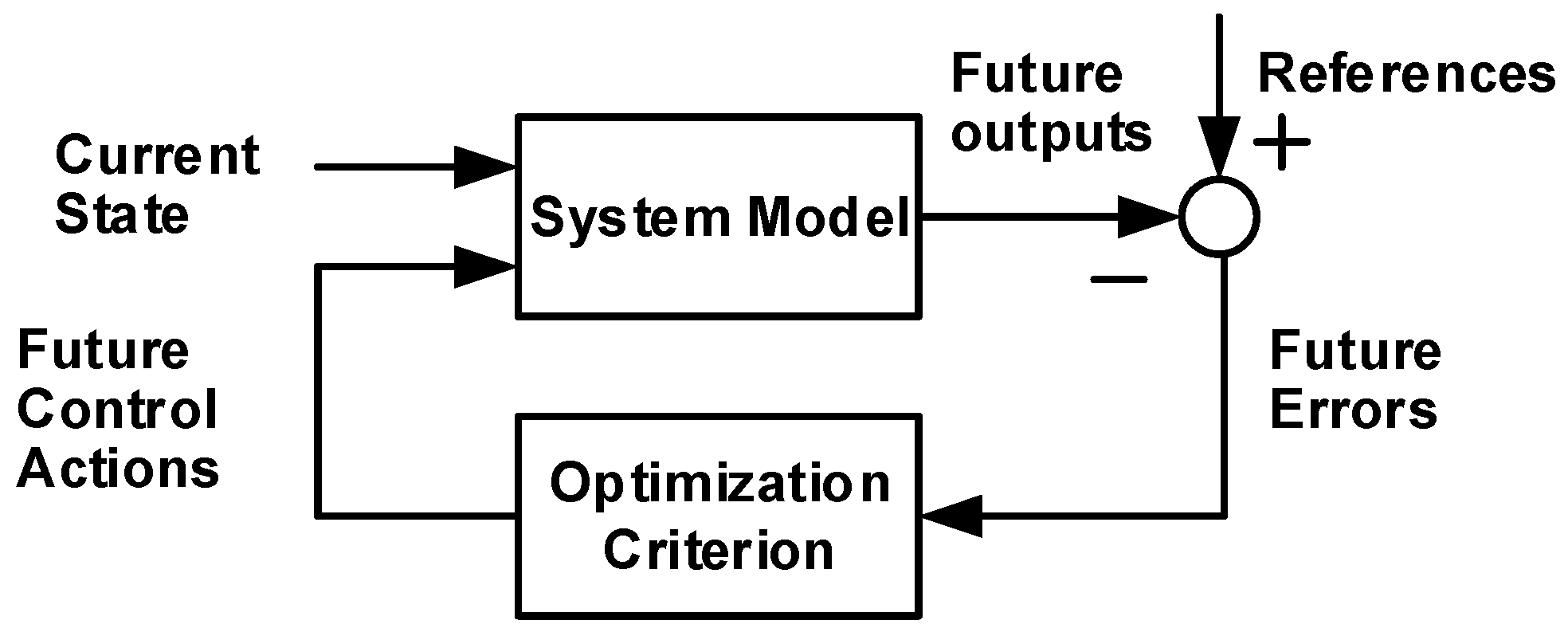
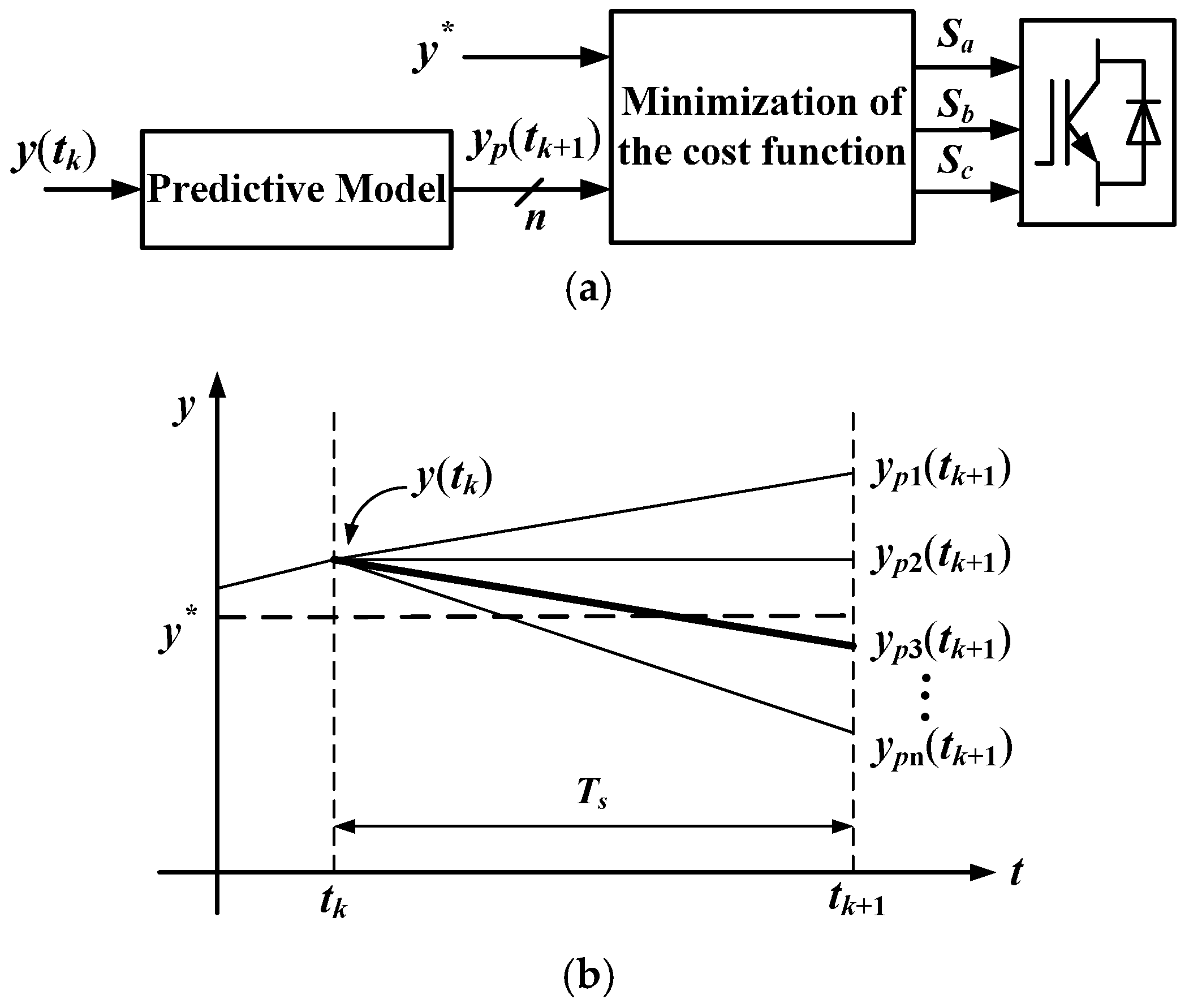
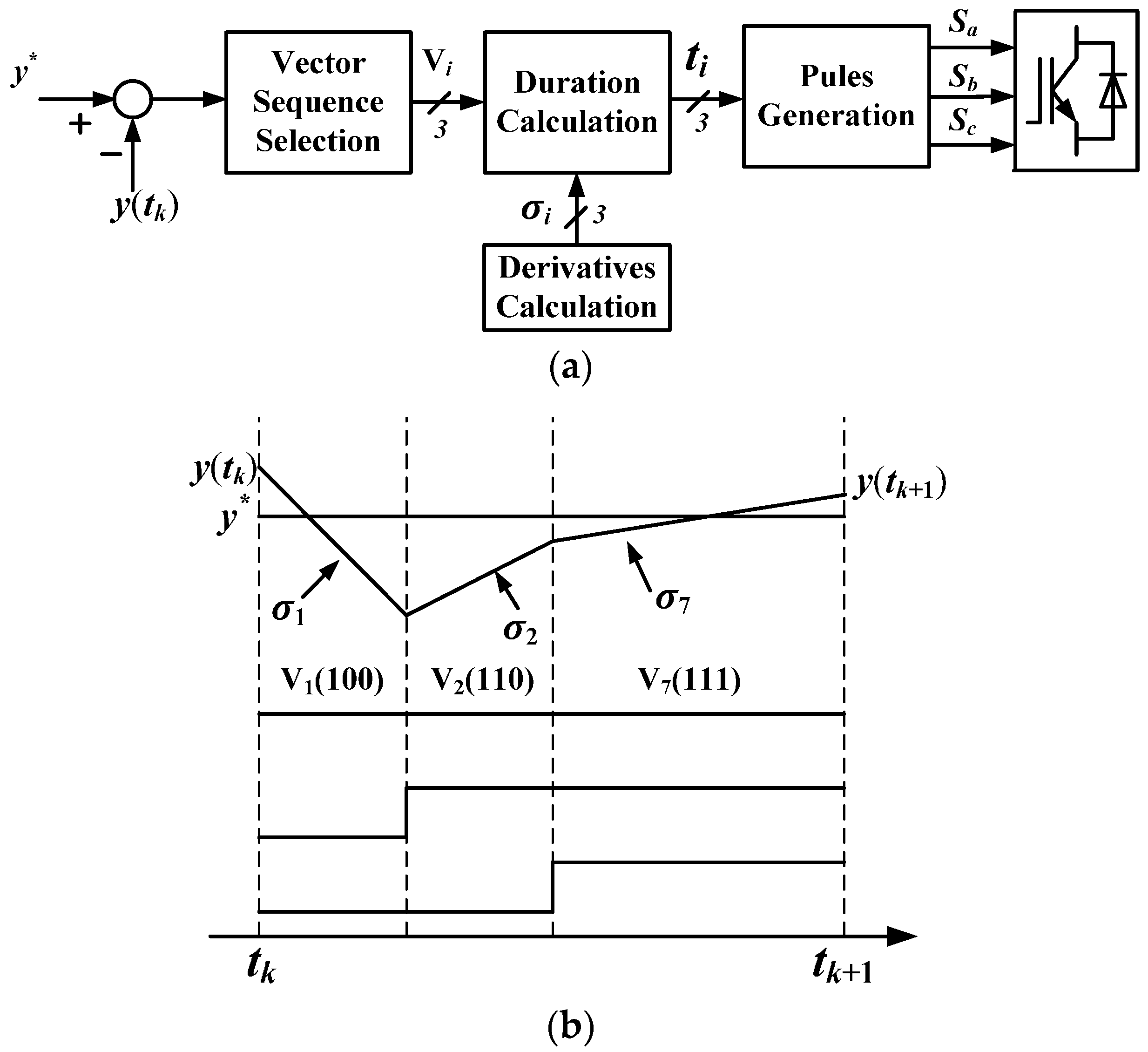
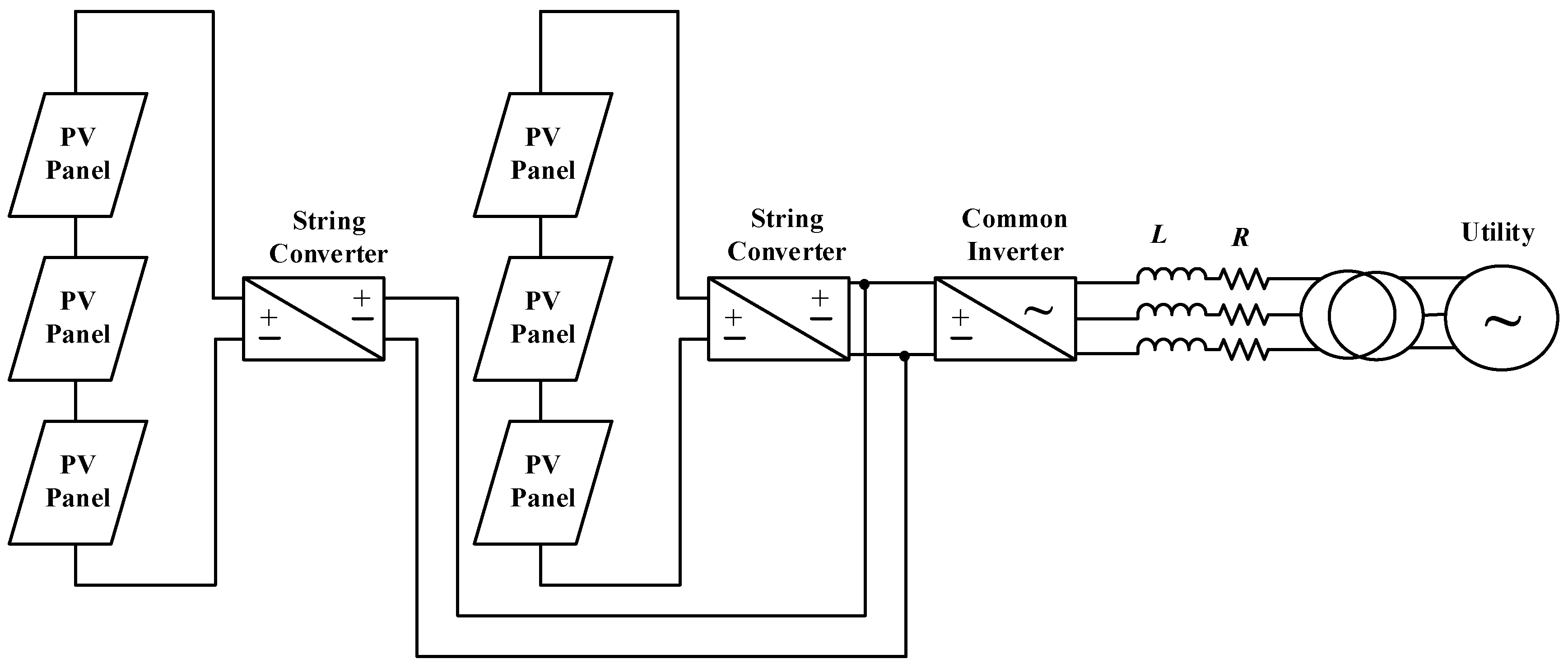
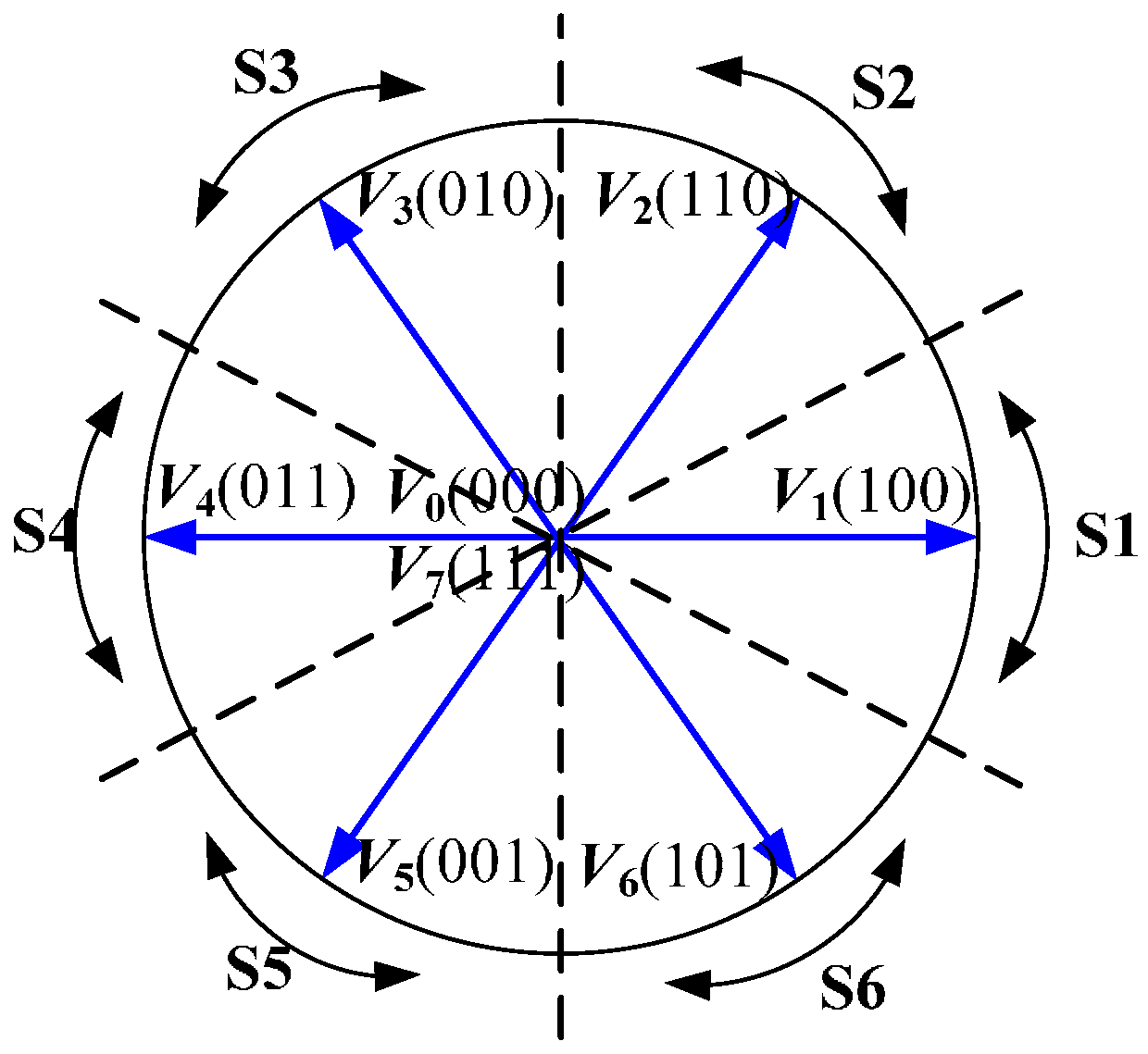


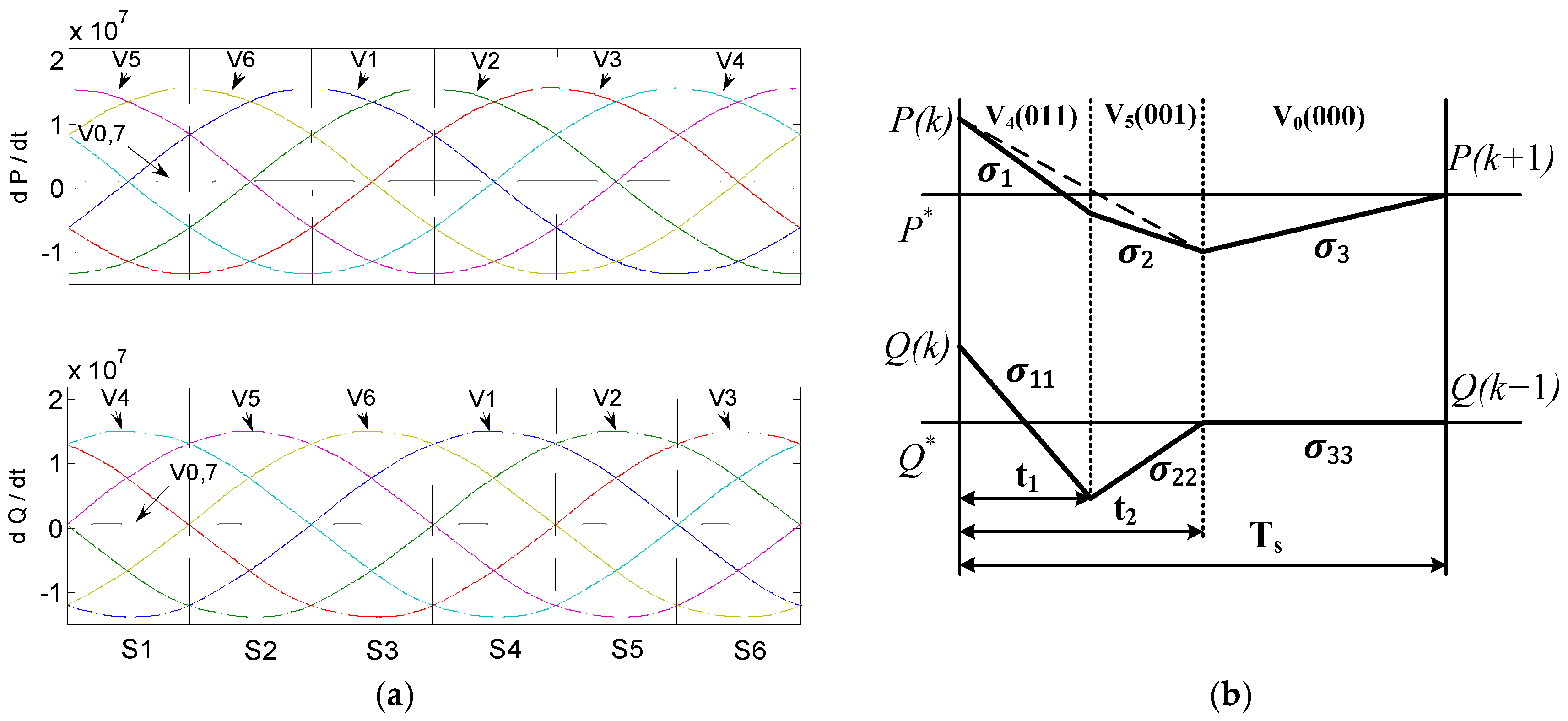
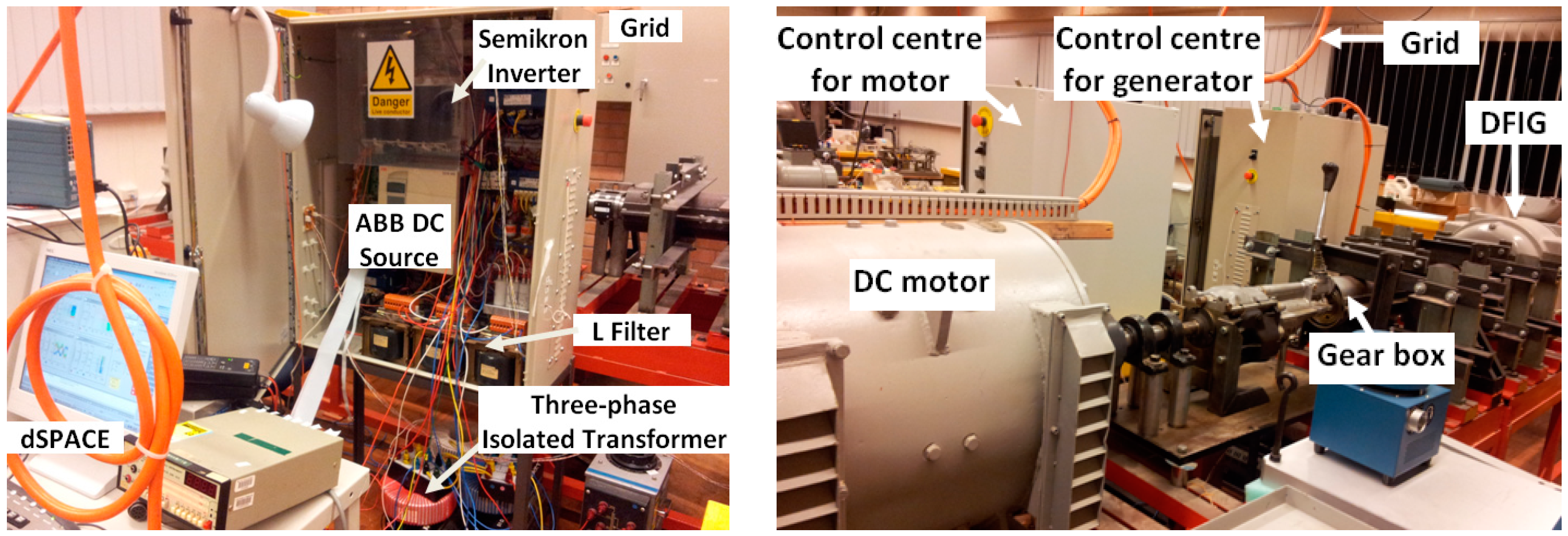
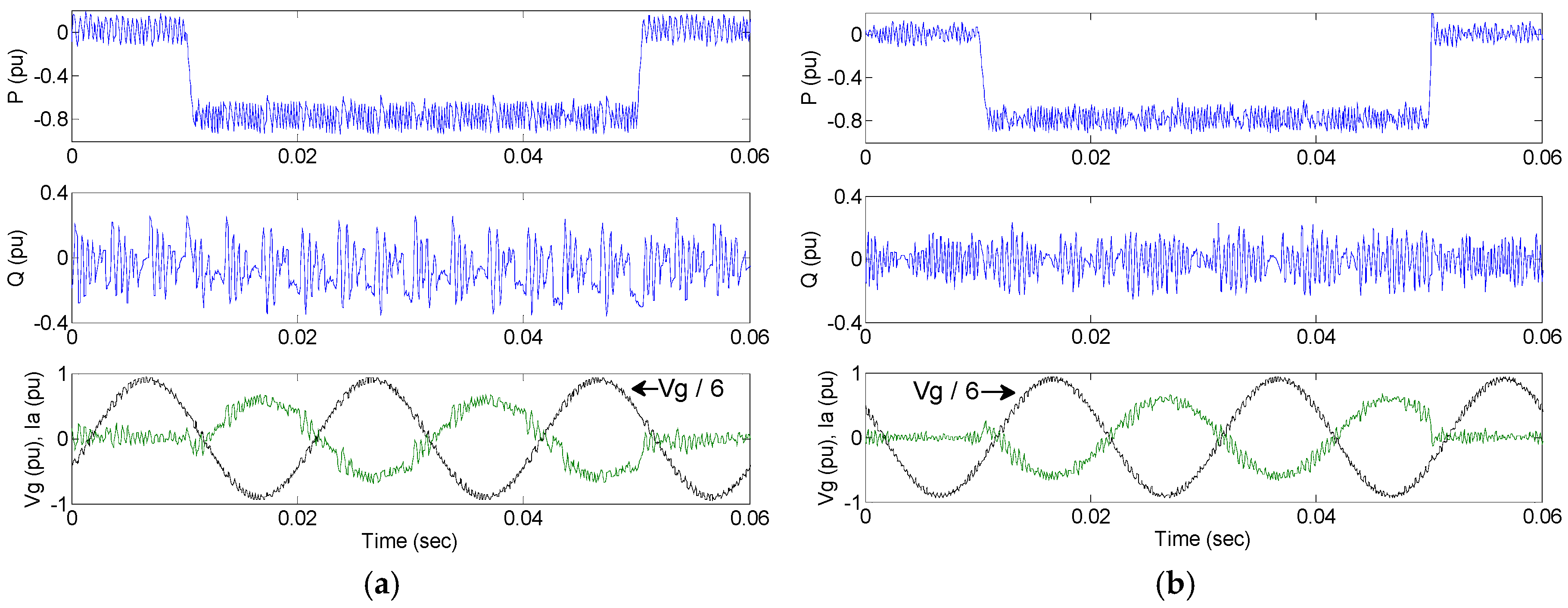
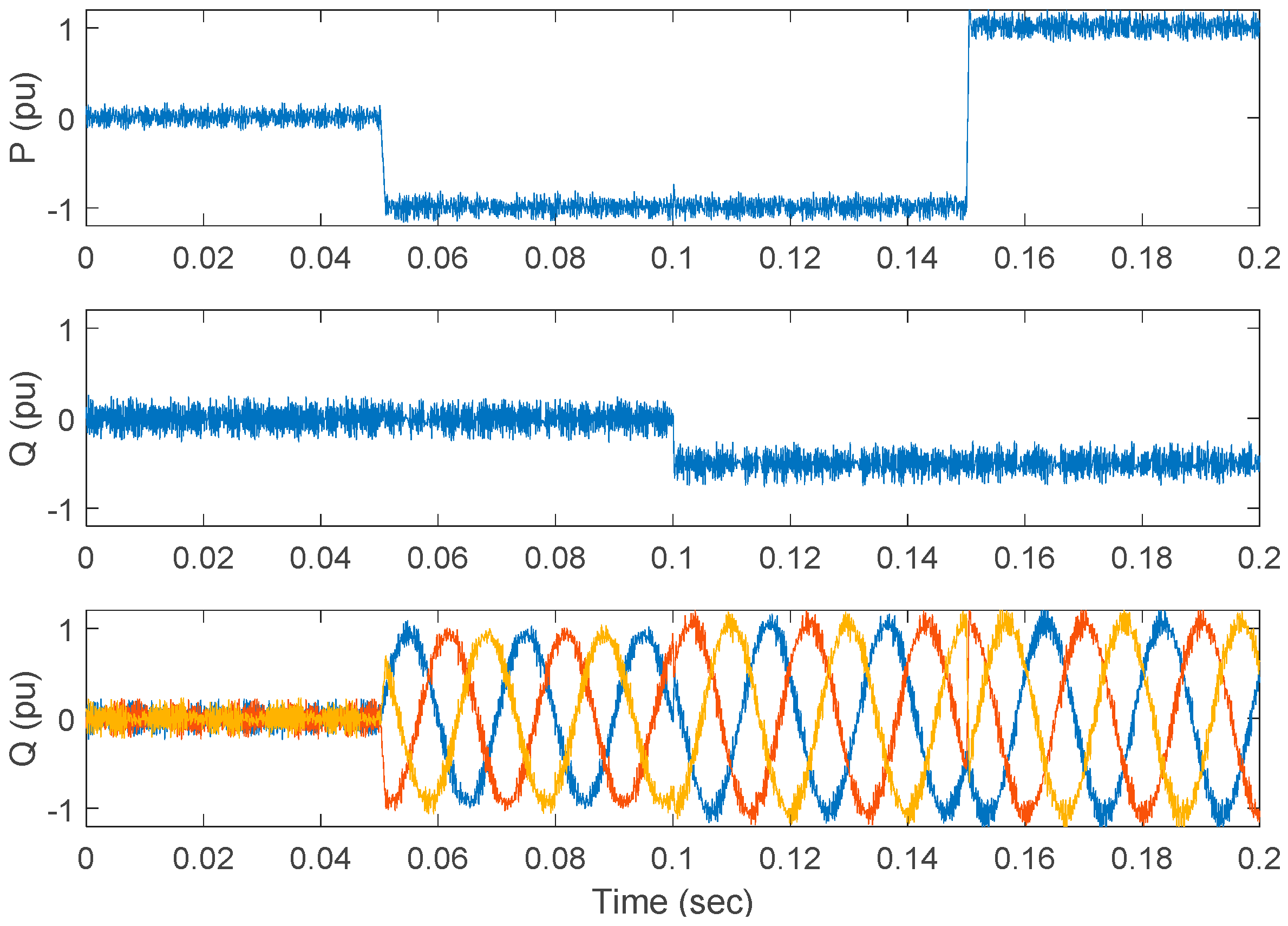
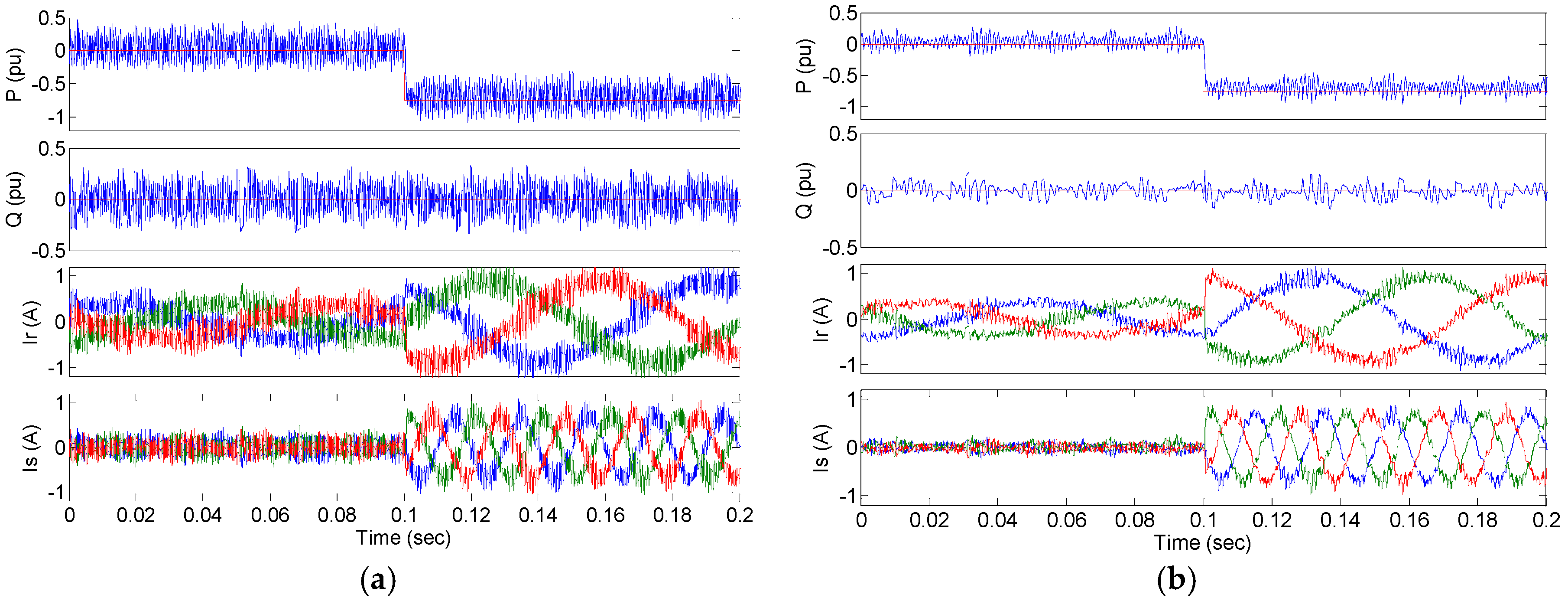
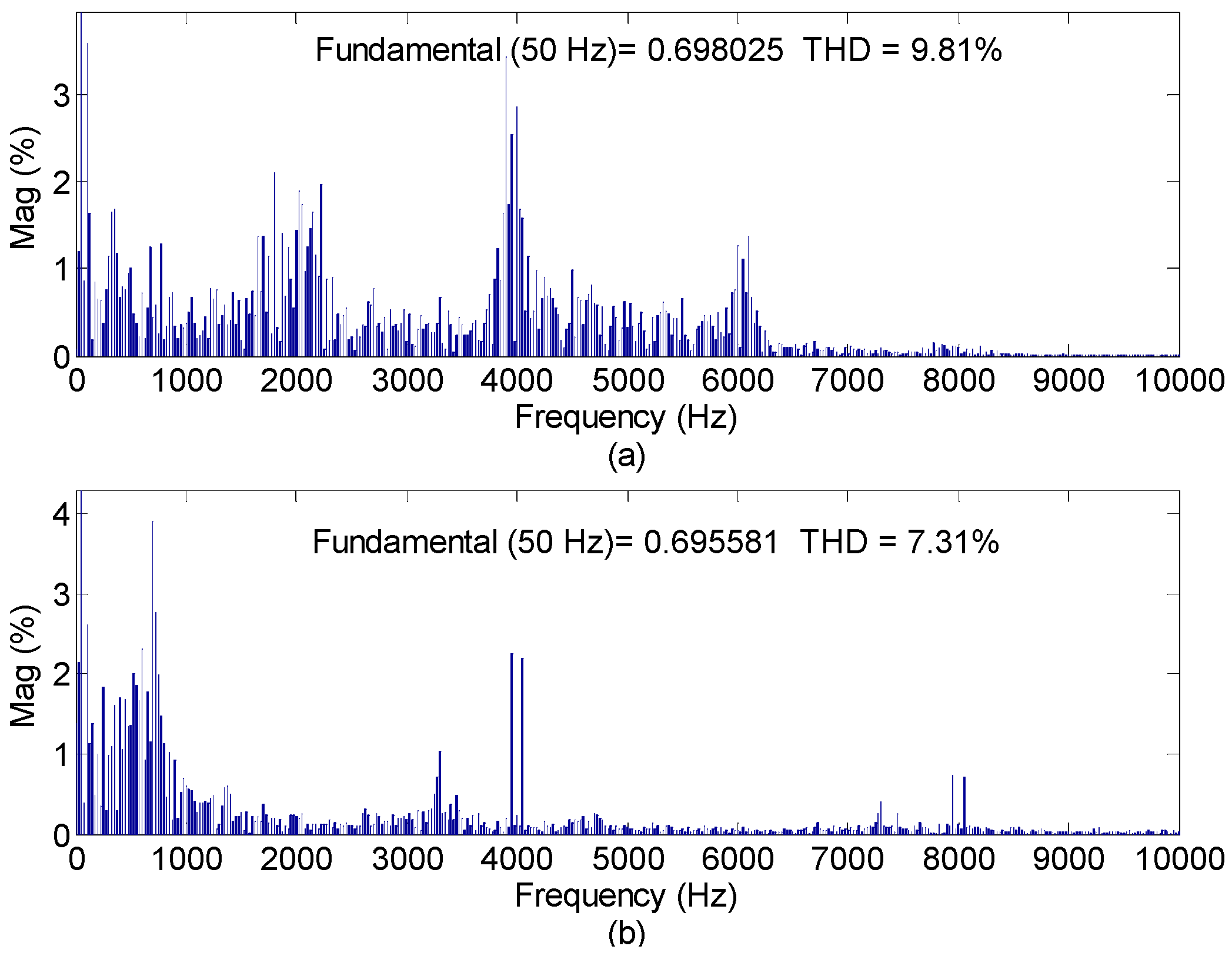
| ∆P (P*–P) | Vector Sequence (k is the Sector Number) |
|---|---|
| >0 | Vk−1–Vk−2–V0,7 |
| <0 | Vk+1–Vk+2–V0,7 |
| Strategy | fs (kHz) | fsw (kHz) | Prip (W) | Qrip (Var) | THD (%) |
|---|---|---|---|---|---|
| SDPC | 20 | 3.32 | 88.53 | 112.92 | 8.27 |
| MPC | 20 | 3.39 | 79.36 | 82.65 | 6.14 |
| Strategy | fs (kHz) | fsw (kHz) | Prip (W) | Qrip (Var) | THD (%) |
|---|---|---|---|---|---|
| SDPC | 10 | 3.89 | 790.6 | 659.4 | 9.81 |
| VDPC | 4 | 2.17 | 434.3 | 488.0 | 7.31 |
© 2017 by the authors. Licensee MDPI, Basel, Switzerland. This article is an open access article distributed under the terms and conditions of the Creative Commons Attribution (CC BY) license (http://creativecommons.org/licenses/by/4.0/).
Share and Cite
Hu, J.; Cheng, K.W.E. Predictive Control of Power Electronics Converters in Renewable Energy Systems. Energies 2017, 10, 515. https://doi.org/10.3390/en10040515
Hu J, Cheng KWE. Predictive Control of Power Electronics Converters in Renewable Energy Systems. Energies. 2017; 10(4):515. https://doi.org/10.3390/en10040515
Chicago/Turabian StyleHu, Jiefeng, and Ka Wai Eric Cheng. 2017. "Predictive Control of Power Electronics Converters in Renewable Energy Systems" Energies 10, no. 4: 515. https://doi.org/10.3390/en10040515





